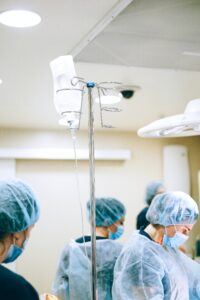What is AMR?

Origins and drivers of AMR
Antimicrobials are agents used to prevent, control and treat infectious diseases in humans, animals and plants. They include antibiotics, fungicides, antiviral agents and parasiticides. Disinfectants, antiseptics, other pharmaceuticals and natural products may also have antimicrobial properties.
AMR occurs when bacteria, viruses, fungi and parasites no longer respond to antimicrobial agents. As a result of drug resistance, antibiotics and other antimicrobial agents become ineffective and infections become difficult or impossible to treat, increasing the risk of disease spread, severe illness and death.
AMR is a natural evolutionary process, but human activities have accelerated its rise. Overuse and misuse of antibiotics in healthcare and agriculture, incomplete patient treatments, and environmental factors like wastewater contamination and climate change contribute to the spread of resistant microbes. These resistant organisms can transfer between humans, animals, and the environment, intensifying the problem.
The impact of AMR

AMR already affects common infections such as urinary tract infections, leading to treatment failures, prolonged illness, higher healthcare costs, and increased risk of resistant infections spreading.
Without urgent action, AMR-related deaths could surge by nearly 70% by 2050, potentially causing 39 million deaths globally and significant economic losses, including a projected 5% reduction in global GDP.
In Australia, AMR is estimated to cause over 5,000 deaths annually, with rural and remote communities facing greater challenges due to healthcare access disparities.
Combating AMR: Strategies for prevention and control
Addressing AMR requires a multifaceted approach beyond developing new antibiotics:

One Health approach: Coordinating efforts across human, animal, and environmental health sectors to tackle AMR holistically.
Antibiotic stewardship: Ensuring antibiotics are prescribed only when necessary and completed as directed.
Infection prevention and Control: Strengthening hygiene practices and infection control in healthcare settings.
Research and development: Investment in vaccines, new treatments, and diagnostic tools to prevent and manage infections.
Public awareness: Educating communities about responsible antimicrobial use.


